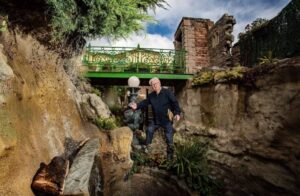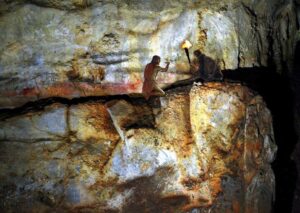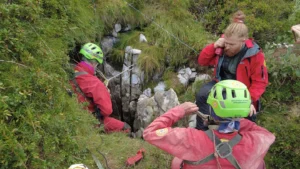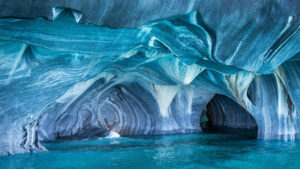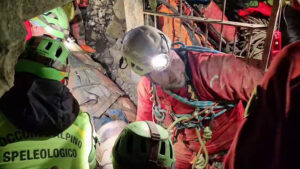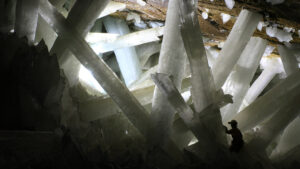Since 2004, Scottish filmmaker Paul Diffley has been carving out a niche for himself making films about Britain’s most acclaimed climbers. A chance meeting a few years ago at the Kendal Mountain Film Festival with Steph Dwyer, coordinator of the Ario Caves Project, convinced Diffley to momentarily turn his viewfinder away from mountains and go in pursuit of his first-ever caving film.
Shot over two summers in 2016-17, The Ario Dream tells the story of cave exploration in the Picos de Europa mountains in northern Spain, which is believed to harbour a system more than 1,800m deep. If true, this would make it the deepest in Europe and one of the top five deepest caves in the world.

A digital cave survey showing an overview of all currently explored and mapped caves within the Ario bowl. They range in depth from several hundred meters to nearly 1,000 meters. Screenshot by Ario Caves Project.
Oxford University’s Caving Club (OUCC) was the first to recognize the area’s potential, and every year since 1979, an international crew of cavers has searched for promising new entry points, thrutching their way through meandering rift passages and descending unexplored shafts.
In any cave, one obstacle can immediately halt progress: submerged passages, known as sumps. In Diffley’s film, he delicately captures the skill and commitment of two cave divers, Paul Mackrill and Tony Seddon, as they attempt to link up the cave known as Sistema Verdelluenga (C4) with another named 2/7, which was explored 20 years previously. The only obstacle separating these two subterranean chambers is an underwater passage of indeterminate length. Their one certainty is the risk they face when diving into this unknown territory.

Paul Mackrill conducts his pre-dive checks before entering the sump separating caves within the Ario system. Photo: Paul Diffley
The film shows the contrasting calmness and tension as the divers methodically prepare to enter the sump. Interspersed throughout these primary scenes, archival footage of earlier explorations, interviews with both the divers and with the authors of a book documenting the earliest forays into Ario’s depths, show what it takes to pioneer a new cave.
The Ario Dream brings to the surface a world of extreme adventure that — unlike mountaineering, say — few of us are familiar with and still fewer would dare to do.

